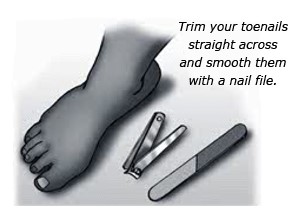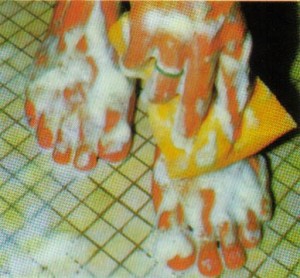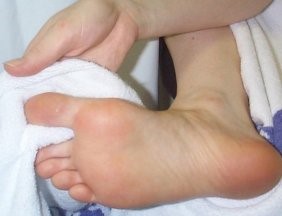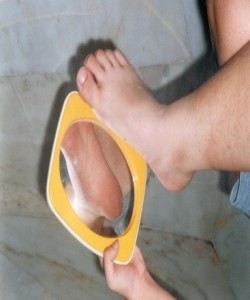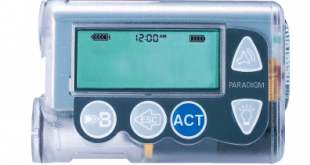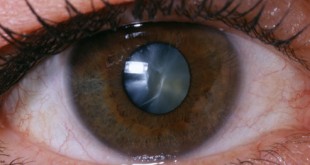Foot care is an essential component of care for every diabetic in preventing the development of diabetic foot complications. The following are important elements in diabetic foot care :
Good diabetes control
Following a reasonable diabetic diet, good compliance with medications, checking your blood sugar regularly, exercising regularly, and maintaining good communication with your physician are essentials in keeping your diabetes under control. Consistent long-term blood sugar control to near normal levels can greatly lower the risk of damage to your nerves, kidneys, eyes and blood vessels.
Quit smoking
Smoking can worsen cardiovascular problems and reduce circulation to the feet.
Avoid activities that can injure the feet
Some activities increase the risk of foot injury and are not recommended. Examples are walking barefoot, using a heating pad or hot water bottle on the feet, and stepping into the hot water before testing the temperature.
Eliminate obstacles: Move or remove any items you are likely to trip over or bump your feet on. Light the pathways used at night – indoors and outdoors.
Use care when trimming the nails
Trim the toe nails along the shape of the toe and smoothen the nails with a nail file to remove any sharp edges.
Never cut the cuticles. Cuticles are part of the skin which protect the nail matrix (part of the nail that grows).
Do not open blisters, try to free ingrown toenails (part of the nail that grows into the soft flesh) or break the skin on the feet. Discuss with your doctor if you need to do any procedures.
Wash and check the feet daily
Use lukewarm water and mild soap to clean the feet. Gently pat your feet dry and apply a moisturizing cream or lotion to prevent dryness of the skin, but not too much on your toe webs to avoid fungus infection.
Choose socks and shoes carefully
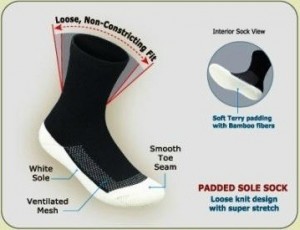
(www.ldfootcare.com) |
Select cotton socks that fit loosely, and change the socks every day.
|
| Select shoes that are snug but not tight, and break new shoes in slowly to prevent any blisters.
Shoe shape must match foot shape
|
 |
Ask about customized shoes if the feet are misshapen or have ulcers. Specialized shoes can reduce the chances of developing foot ulcers in the future. Shoe inserts may also help cushion the step and decrease pressure on the soles of the feet.
Exercise
Regular exercise will improve bone and joint health in your feet and legs, improve circulation to your legs, and stabilize your blood sugar levels. Consult your physician prior to beginning any exercise program.
Ask for foot exams
Screening for foot complications should be a routine part of most medical visits, but is sometimes overlooked. Don’t hesitate to ask the healthcare provider for a foot check at least once a year, and more frequently if there are foot changes.
References
- Lectures notes for Diabetics Educators Workshops, State of Selangor
- Figure 1 : Trimming the nails (http://your-doctor.com/healthinfocenter/medical-conditions/endocrine-disorders/diabetes/footcare-dm.html)
Quiz
- What are the important elements of foot care ?
Answer : Always examine your feet, look for any cuts and breaks in skin. Avoid getting injuries by ensuring your environment is not injury prone. Good care for nails and toes. Get your foot examined by health care providers, quit smoking if you do and control your blood sugar to a near normal value.
- How to prevent athlete’s foot?
Answer: After washing your feet, pat your feet dry and apply moisturizing cream or lotion to prevent dryness of the skin. Avoid applying too much cream or lotion on your toe webs to prevent fungus infection and developing athlete’s foot.
 PENDIDIKAN PESAKIT Kementerian Kesihatan Malaysia
PENDIDIKAN PESAKIT Kementerian Kesihatan Malaysia
